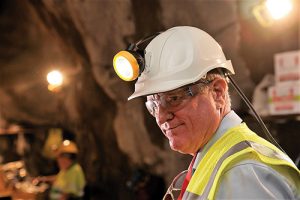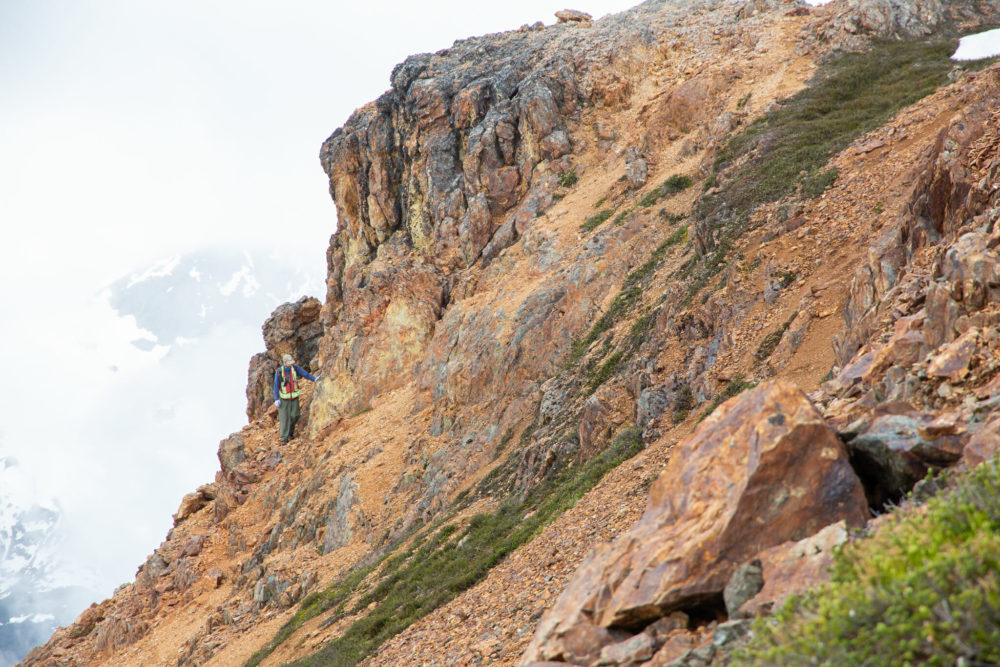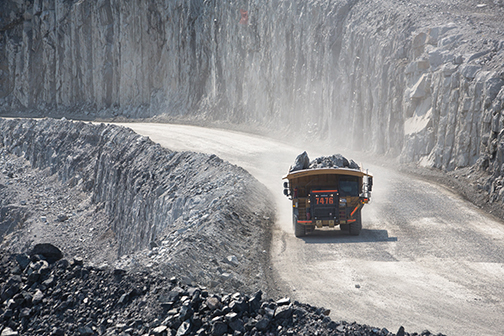Eldorado speeds toward production at Lamaque
Eldorado Gold is best known for its international assets – among them, the Kisladag and Efemcukuru mines in Turkey and the Olympias and Stratoni mines in Greece. Until 2016, when it sold its assets there, it also had mines in China.
But the company is about to open its first mine in Canada, after acquiring Integra Gold and its Lamaque project in Val d’Or, Que. last year.
Importantly, Lamaque finally gives Eldorado an operating asset in its home country, something president and CEO George Burns says was “strategically important and desirable.”

“Although we like Canada and wanted to be an operator here, it’s a very competitive environment so we’d been looking for that right entry point.”
With its eye on Lamaque as that entry point, the company made an initial investment for 15% of Integra in 2015. In mid-2017, it negotiated a $590-million friendly acquisition of the junior.
With current reserves of 893,000 oz. gold in 3.8 million tonnes grading 7.3 g/t, outlined in a prefeasibility study early this year, Lamaque is expected to produce an average of 117,000 oz. gold per year over an initial seven-year mine life.
And starting next year, when it enters commercial production, Lamaque will play a key role in Eldorado’s plan to double production to 600,000 oz. by 2021.
“In the mix of our mines, Lamaque will be our second largest mine and be a very important contributor to value at Eldorado,” Burns said in an interview. “And it’s got probably the most exciting exploration potential in terms of the ability to extend mine life and increase reserves.”
It also gives the company an asset in the highly stable and mining friendly jurisdiction of Quebec, lowering its overall geopolitical risk. Eldorado is looking at transitioning its Kisladag heap-leach mine in Turkey to a larger operation with a mill. In Greece, the company has seen permitting delays at its Skouries project and in September announced it would be seeking €750 million from the government in compensation.
At Lamaque, permits have been granted without delay and development has progressed quickly, said Burns in late August.
“We acquired (Lamaque) a little over a year ago and we’ve completed 10,000 metres of underground development. Out of that, about 5,500 metres has been done this year and essentially that’s ramp development and setting up sills for longhole stoping.”
The mine is permitted for up to 2,000 t/d and the operating permit for the mill is expected by year end.
According to a March 2018 prefeasibility, Lamaque’s economics are healthy. The project has an after-tax net present value (NPV) of US$211 million and an internal rate of return (IRR) of 35%. That’s calculated using a 5% discount rate and based on US$1,300 per oz. gold. However, Lamaque still shows positive economics at US$1,200 per oz. gold, with an NPV of $150 million and an IRR of 25.9%.
The project has a low projected capex of $122 million plus $57 million of pre-commercial costs. That will be offset by $80 million in pre-commercial gold sales for a net start-up capital of $99 million. The pre-commercial gold sales, from toll milling of ore that has come of development, has helped to de-risk the project from a technical standpoint.
“That’s given us confirmation that our metallurgical assumptions and our modelling of the underground deposit is consistent with the gold production this year,” Burns says. “It’s helping us offset capital costs but most importantly, it’s helping verify all the key assumptions that underpin this investment.”
Project history
The Lamaque property consists of the historical Sigma and Lamaque mines, which were owned, respectively, by Placer Dome and Teck. Between them, the mines, located in the Abitibi greenstone belt, produced almost 10 million oz. gold starting in the 1930s and ending in the 1980s.
Subsequent attempts by McWatters Mining and then Century Mining to put the mines back into production were ultimately unsuccessful.
However, Integra Gold’s discovery of the Triangle deposit, located about 2.5 km south of the Sigma and Lamaque mines, showed that the property’s potential was far from exhausted.
Triangle is an Archean orogenic lode gold deposit, with gold hosted in quartz-tourmaline-carbonate veins that occur within a series of sub-parallel, sub-vertical shear zones centred around the Triangle Plug.
One of the factors keeping capital costs low at Lamaque is existing infrastructure, including the Sigma mill.
The company is refurbishing the mill, which was last updated in the late 1990s and has two ball mills and one rod mill. Eldorado is replacing four CIP tanks and refurbishing three at the mill, as well as rebuilding the mill motors, and constructing a new reagent building. It’s also installing a state of the art new operating system to control the mill and maximize recoveries.
Eldorado is also taking advantage of other opportunities to modernize the mine with technologies aimed at improving productivity and minimizing environmental impacts. For example, it’s looking at dewatering or thickening its tailings.
Underground, the company will use tagging and tracking technology on workers and equipment to improve safety. It will also use ventilation on demand technology to decrease operating costs and the operation’s environmental footprint.
“We’ve also brought in electrical experts to assess both the underground and the mill to look for opportunities to make the electrical systems as efficient as possible for the exact same reasons – to reduce our footprint and improve our energy efficiency,” Burns says.
Exploration
While the Triangle deposit is the focus of Eldorado’s mine plan, Burns believes there’s a lot more potential for further discoveries.
“What we liked about (Lamaque) was it’s a large property position; there’s a lot of untested exploration targets,” said Burns. “We’re in the early stages of developing and understanding the full potential of the Triangle deposit and we have a couple of other resource areas that we think have really good potential. We’re reasonably confident that with additional focus and exploration we’ll be able to expand our reserve base beyond the Triangle deposit and be able to ramp up production to a higher level.”
Only one of the two veins that are included in the deposit’s maiden reserve is actually drilled off, Burns explains.
“The second vein is thicker, higher-grade and only half of the vein so far has been infill drilled, which enables us to consider them reserves.”
Although the company believes it will be able to convert resources in the bottom half of the vein – the Lower Triangle deposit – to reserves, expanding reserves hasn’t been the focus of its work this year.
“This year, our exploration’s been focused on some of the deeper veins and the reason why is we really wanted to have a reasonable understanding of the full potential of the deposit in order for us to strategically design infrastructure to support that ultimate mine life.”
Since the end of 2017, the company has completed more than 12,000 metres of expansion drilling, with another 10,000 metres planned this year. That drilling has found additional veins with good potential, and determined that the mineralized system extends to at least 2 km depth. With that knowledge in hand, the focus will now switch to deep drilling to bring that material into inferred resources while also shoring up reserves.
The last focus of exploration is on the known historical deposits, Plug 4 and Parallel. In terms of long-term development, Eldorado is studying building a second ramp at Lamaque that would provide a more direct corridor from the Triangle deposit to the Sigma mill, as well as exploration access to Plug 4, Parallel, and other targets.
“This is a pretty unique opportunity for us and I’m hopeful it’s the beginning of reaching our full potential,” concludes Burns.
“We like Canada, we like Quebec, and we’ll be looking for further opportunities beyond Lamaque to expand our footprint here in Canada.”





Comments